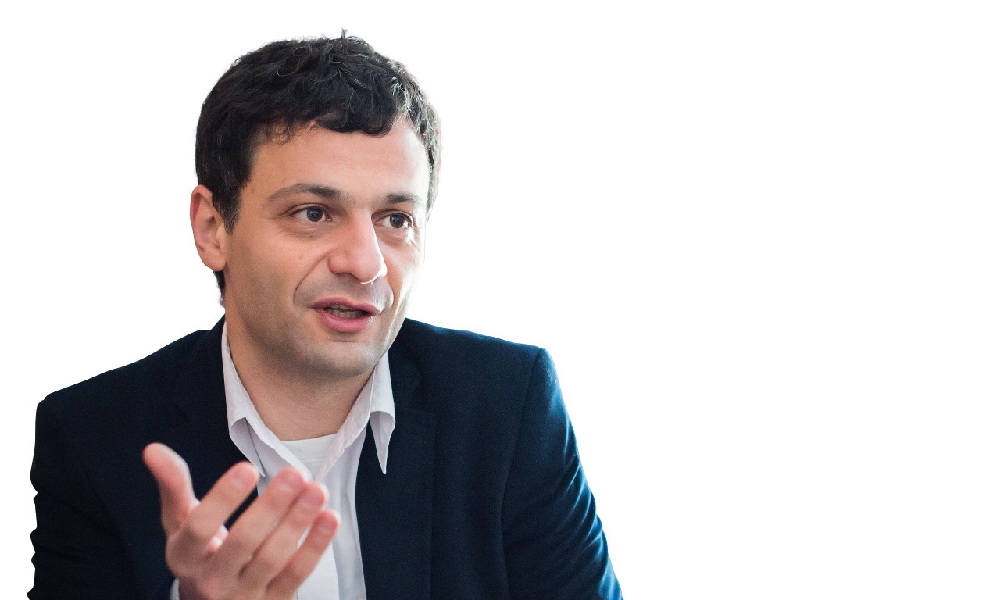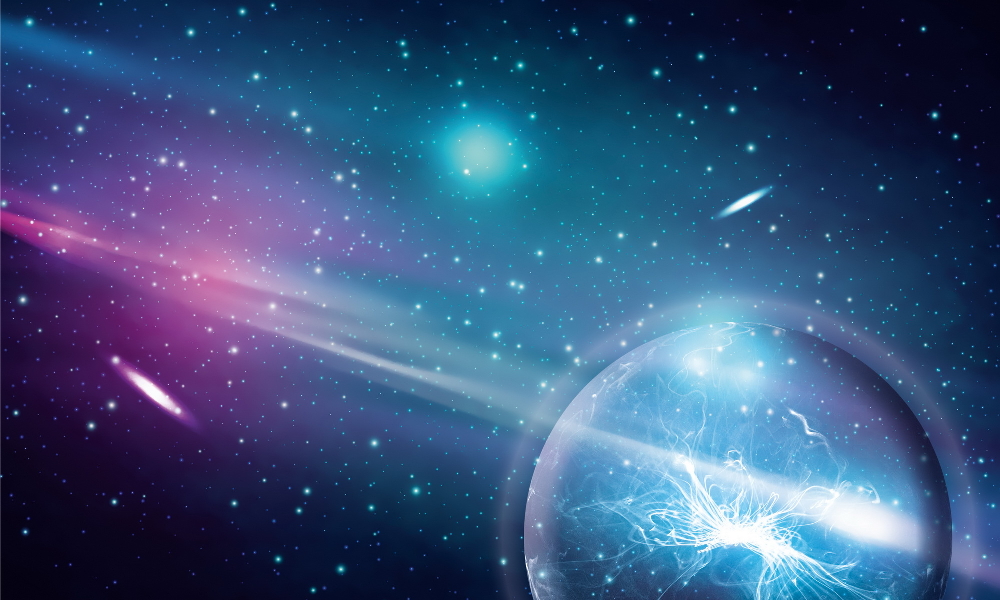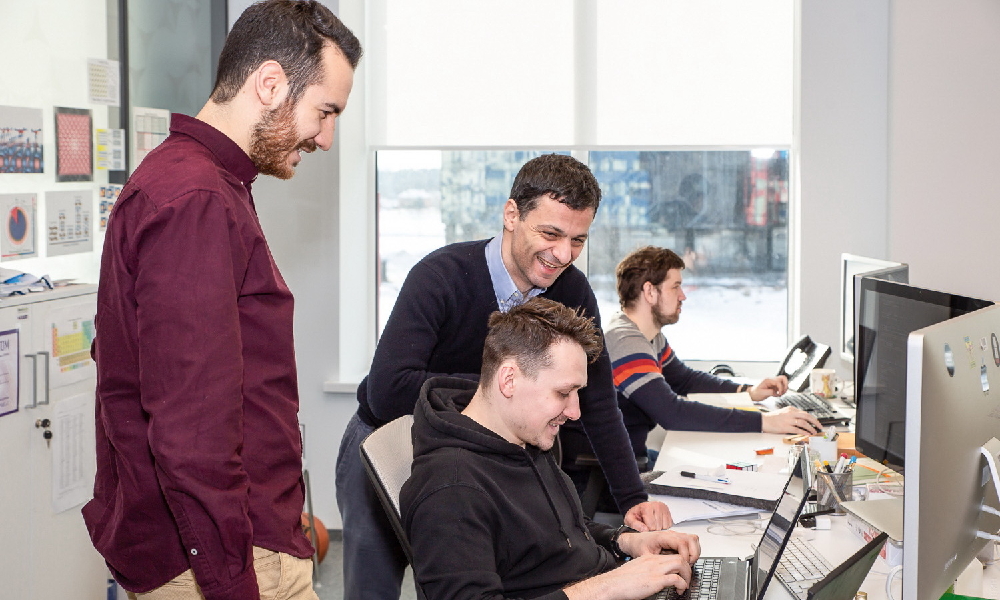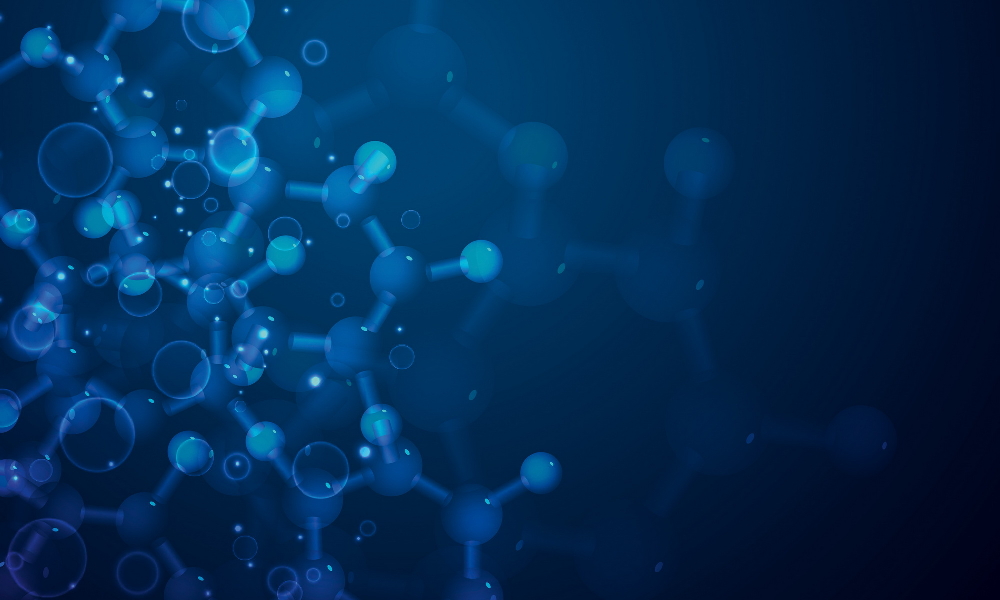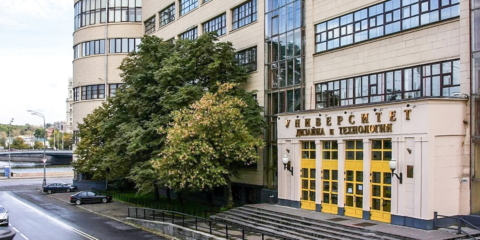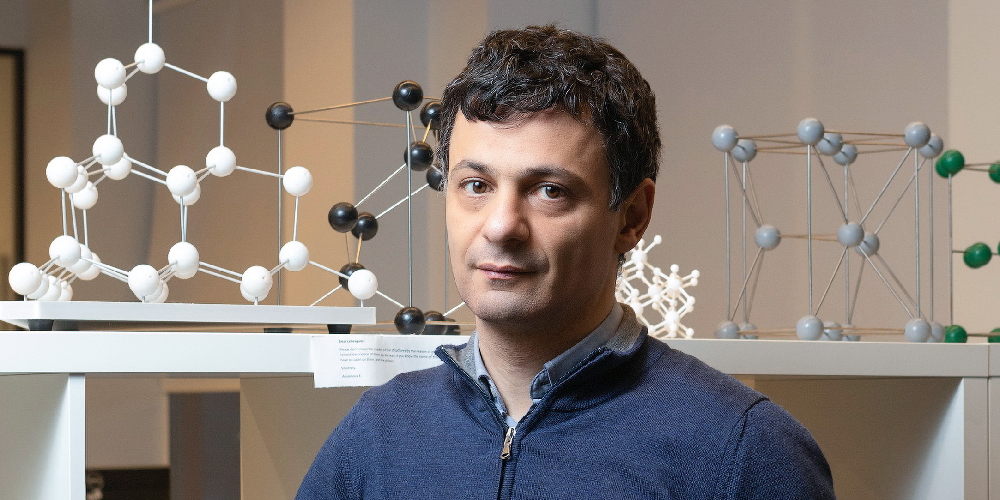
Those who are keen on science, especially chemistry, know the name of Artem Oganov well. And those who just start showing interest in this area will be curious to find out about the world-renowned Russian chemist. Famous crystallographer, educator, Professor of the Russian Academy of Sciences, a member of the most prestigious Academia Europaea is known mostly for his unique methods for computational materials discovery and crystal structure predictions, studies of matter at high pressures. Thousands of researchers all over the world use the USPEX computer program developed under his supervision. Dozens of his predictions have been confirmed experimentally and have significantly affected the fundamental knowledge in materials science, physics, chemistry, and Earth sciences
Let's talk with the famous scientist about what a successful career can start from, how science is made, the qualities scientists must have to succeed, and many other things. We hope that such interesting and honest opinions about different aspects of science will encourage somebody to devote their lives to research in Russia.
Short Bio
Having graduated from Moscow State University's Faculty of Geology with honors with a degree in Crystallography and Crystal Chemistry, Artem Oganov, at the age of 23, won a scholarship to study in the West. He obtained a PhD degree from University College London and then habilitation (Doctor of Physical and Mathematical Sciences in Russia) from ETH Zurich. He moved to the State University of New York at Stony Brook as Associate Professor in 2008 and was promoted to Full Professor in 2010.
In 2013, the scientist won two mega grants — in Russia and China. In 2014, he moved to Russia and became a Full Professor at Skolkovo Institute of Science and Technology. Since 2020, he has also been a Full Professor at NUST MISIS, and since 2021 — Head of the Laboratory of Crystal Chemistry of Vernadsky Institute of Geochemistry and Analytical Chemistry of the Russian Academy of Sciences.
Among the numerous awards of Artem Oganov are the Chinese Government's Friendship Award. He was elected a Professor of the Russian Academy of Sciences in 2015. He has been a member of Academia Europaea since 2017 and was elected a fellow at the Royal Society of Chemistry and the American Physical Society in 2020. Sixteen Candidates and one Doctor of Sciences earned their degrees under his supervision.
Oganov became the youngest laureate of the Soglasie international award granted by the Union of Armenians of Russia supported by the Russian Government
The Big Dream
– I had been dreaming of becoming a scientist since I was four. I was captivated by a popular science book from our home library. My brother and I learned to read early. We liked leafing through books, reading and examining them. We had all kinds of books. Our mom made us familiar with a variety of things, including poetry, painting, history, and sciences, to find out what we were inclined to and what we gravitated to and help us make our dreams come true later. Not only the pictures in the chemistry book but also the beautifully written text aroused my interest. It described chemical elements, how they occur naturally, how they behave, what properties they have.
That's how I got absorbed in chemistry when I was a child, and I could see myself only as a scientist all my life. It didn't take long before I could read Himiya i zhizn' (Chemistry and Life) journal and other books. When I was 6-8, I attended lectures on chemistry at the Polytechnic Museum and Mendeleev Institute.
I believe this to be the best and most universal way to acquaint children with the world of knowledge, inspire them so that they are keen on reading books, attending lectures, and living.
Prediction: Magic Or Science?
– Prediction is one of the functions of science. Science must generalize, explain, and predict. That's why any well-developed scientific discipline has a predictive framework.
In crystallography, this predictive framework was underdeveloped not too long ago. Crystal structure prediction was thought impossible, and scientists considered this problem unsolvable.
However, if we know the structure, we've long had an opportunity to calculate an array of properties using complex quantum mechanical methods. But, again, this can only be done if we know the structure. And the prediction of the structure itself seemed impossible in principle.
In Russia, computational sciences suffered severely from the lack of supercomputers until recently. The reason is clear — the Jackson-Vanik amendment in US legislation prohibited the sale of supercomputers to the USSR and Russia for many years. Russian scientists severely lacked supercomputer resources in the late Soviet Union and early post-Soviet Russia. Later this amendment was repealed, and many problems disappeared. Over the last 10-15 years, Russia has had a constellation of scientists working in this area at an international level.
But let me revert to the point I started from. Property prediction based on the predetermined structure is well-proven for most properties, but structure prediction was considered impossible. But I proved that structure could be predicted when I developed (2005) and published (2006), in collaboration with my student, the method to solve this problem. Now we can predict structure based on the predetermined composition. You preset a chemical formula, and my program will predict the structure that will help you calculate a variety of properties. You can describe a substance even if you don't hold it in your hand.
Later, I refined this method. And you don't need to preset a chemical formula anymore — just say what elements you are interested in and what conditions (pressure, temperature) there are. And the program will find all stable compounds of these elements under these conditions. Tentatively speaking, my crystal structure prediction methods have brought theoretical crystallography and materials design to a really predictive, breakthrough level.
What Good Will It Do?
– Even under normal conditions, we know by no means all compounds — scientists always discover new ones. It's exceedingly expensive to handle all possible combinations of all elements and find all stable compounds experimentally. And it's hardly possible to handle all these compounds, find the best materials for various purposes — for example, the hardest material, the strongest or most magnetic material, the best material for laser technologies, etc.
Computers can help us predict the compound with the best properties (among all known and still unknown compounds) for some particular purposes. For example, which material is the hardest one among all possible materials discovered and not yet discovered? We can ask computers about it, and they will tell you that you'll find nothing harder than diamond, at least among crystalline substances. Besides diamond, it will predict plenty of other compounds that will also be very hard, including compounds that have not yet been discovered. Computers predict them, and then people go to a laboratory and synthesize them.
So, the first thing we need it for is the creation of new materials with record-breaking properties. Because it's too expensive to handle all this experimentally, do labor-intensive synthesis works, and then measure properties.
Secondly, we can study the substance in conditions where experiments are almost beyond belief. For example, experiments are difficult to carry out at high pressures. And high pressures hold plenty of new, understudied chemical phenomena that must be understood because the lion's share of matter on our planet and other planets is discovered at high pressures. We'll never understand what's happening on our planet, how it evolves, what structure it has, what processes occur in it until we understand the properties and behavior of properties at high pressures and temperatures typical of the Earth.
Besides, there are some other difficult situations where experiments are difficult to carry out today. The theory could explain, clarify, predict a lot. For example, the structure and properties of nanoparticles, crystal surfaces and grain boundaries. It's extremely difficult to experiment here. Not all experiments give exhaustive information, and our methods allow us to provide a sufficiently complete description of such states of matter.
10.09.2021

